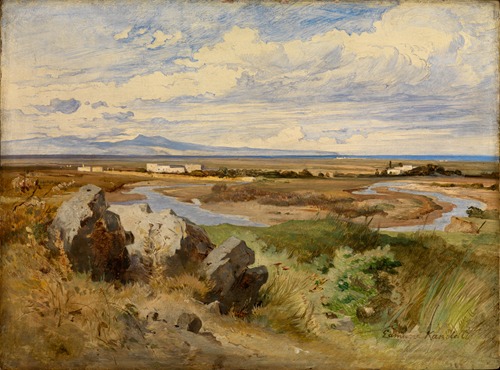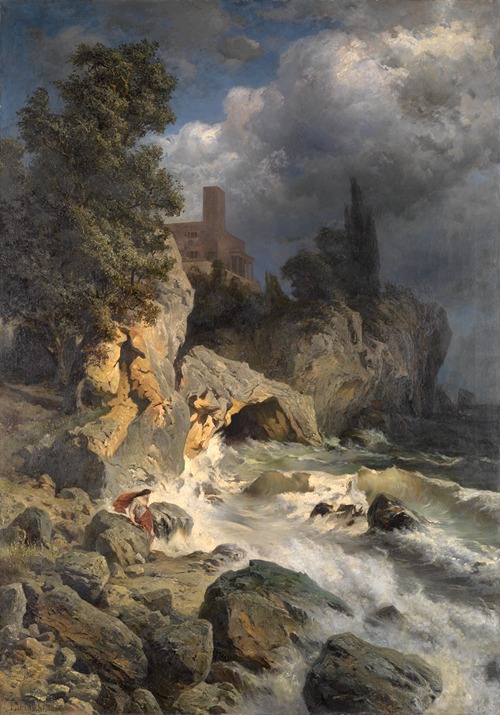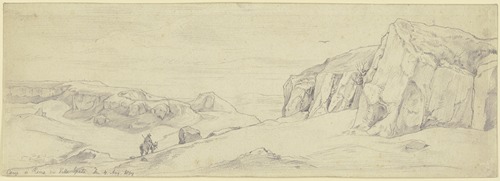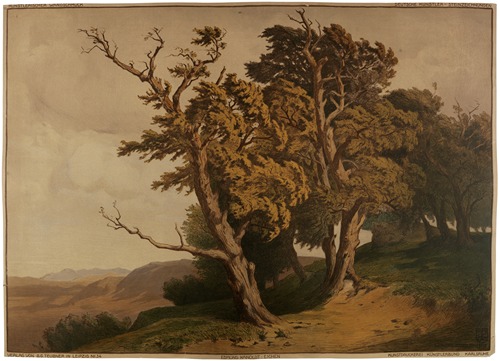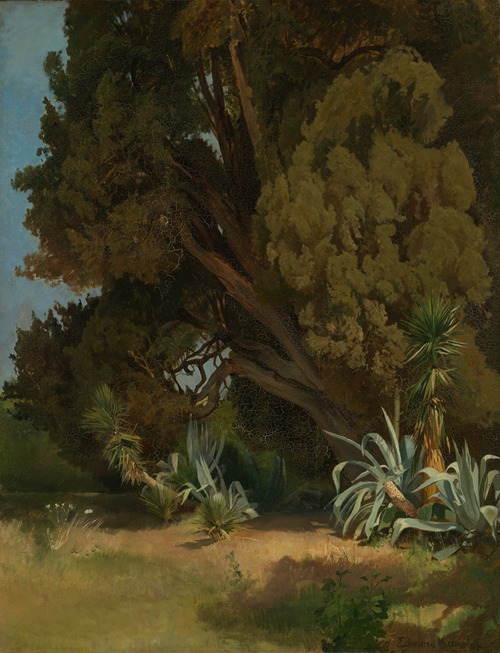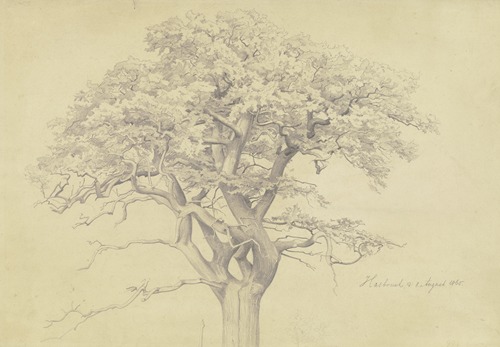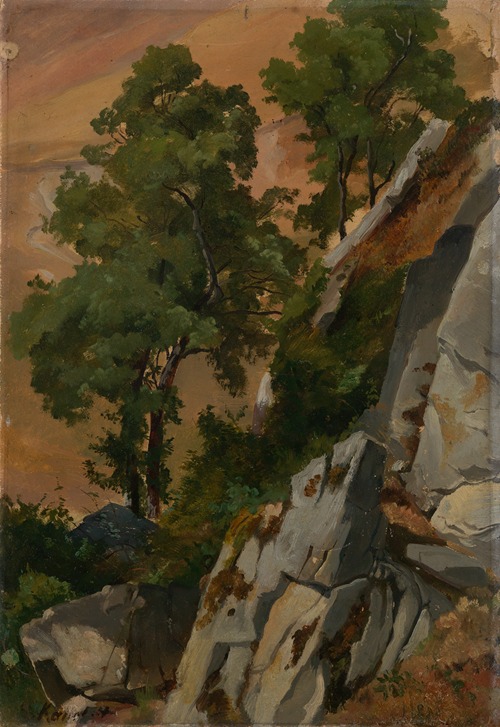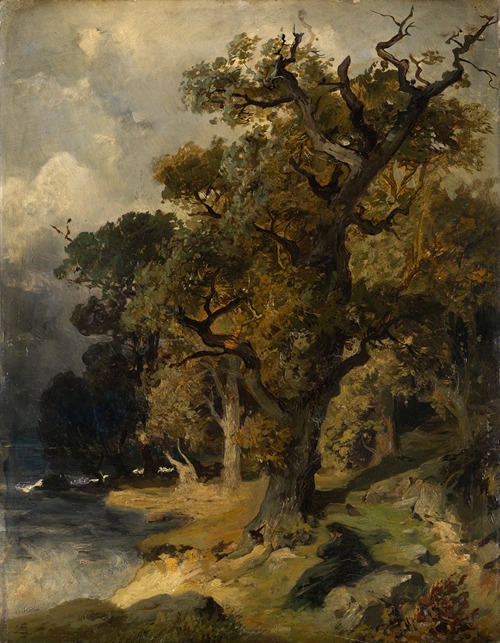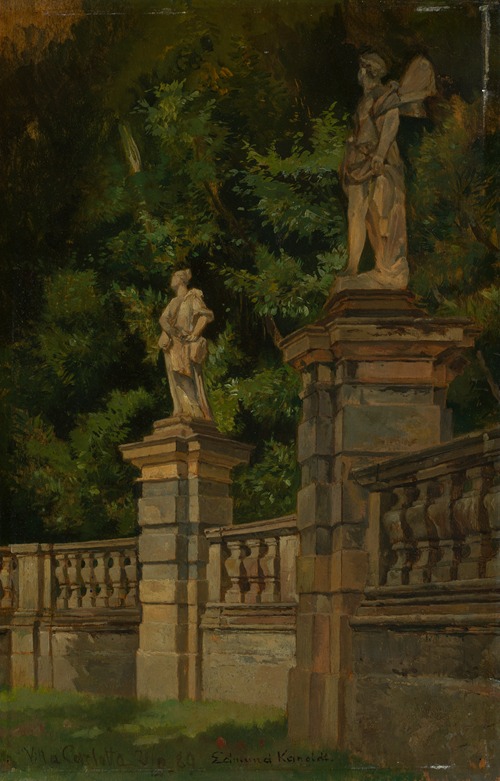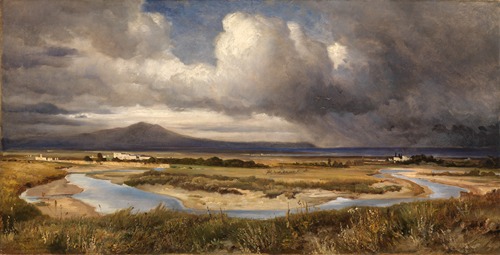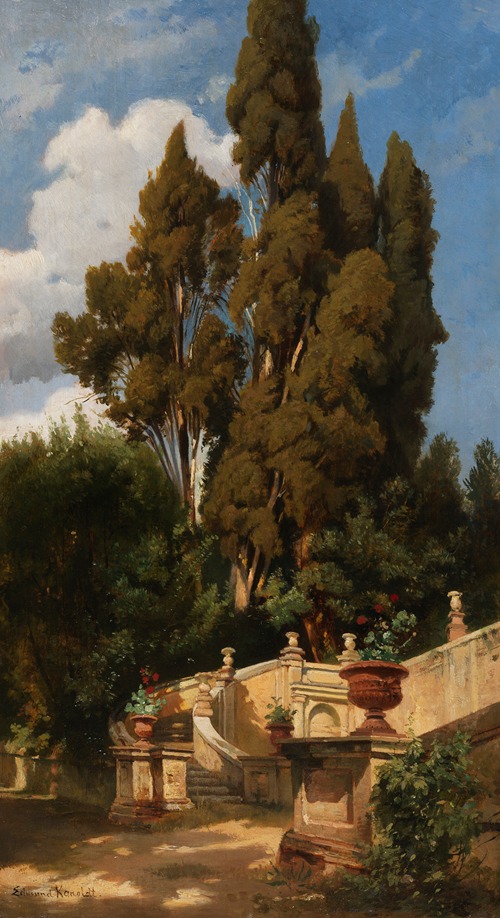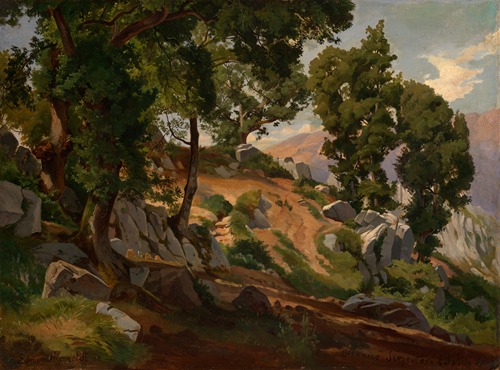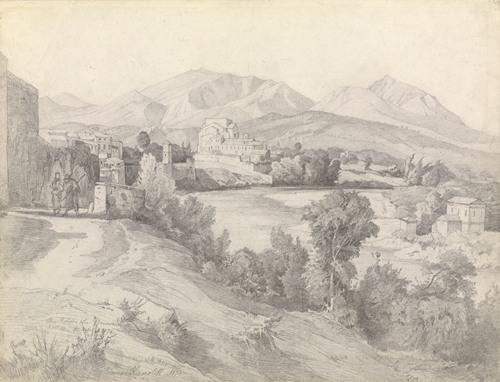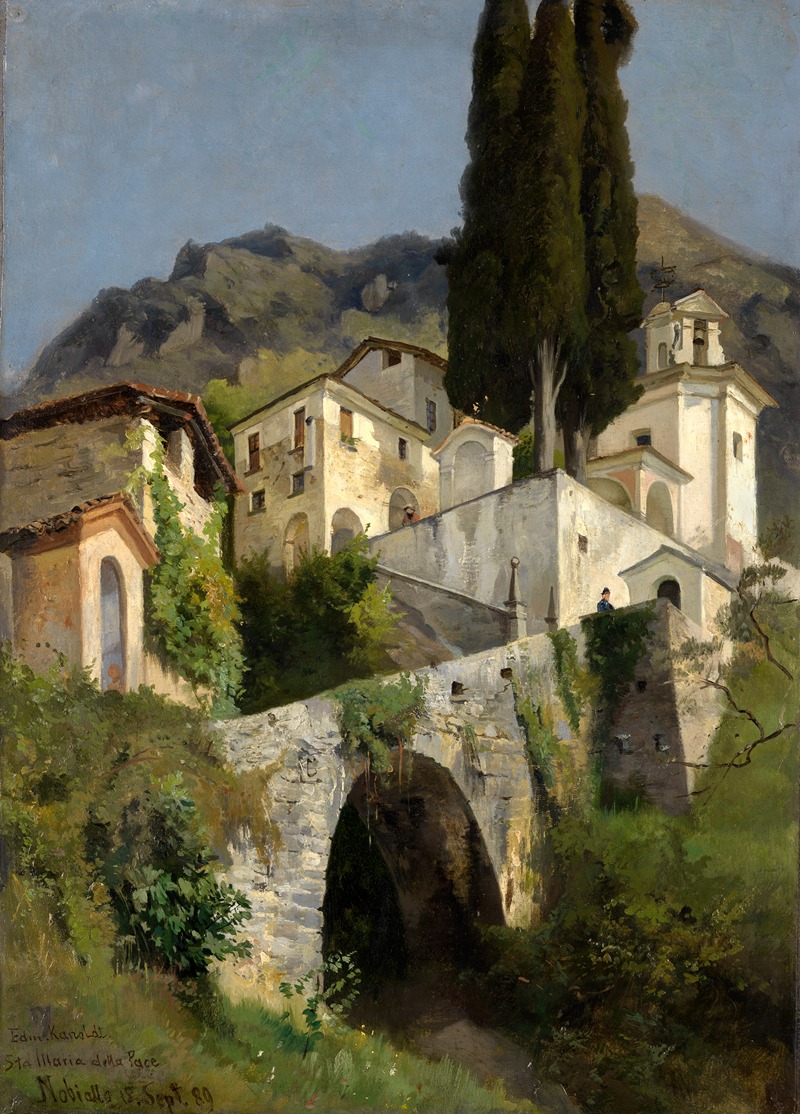

Edmund Friedrich Kanoldt was a German painter.
Kanoldt was a pupil of Friedrich Preller in Weimar for four and a half years and went to Rome in 1869, where he devoted himself to stylized heroic landscapes under Dreber's influence. Following in his teacher's footsteps, he visited Olevano Romano, where he also created his pencil drawing La Serpentara di Olevano. He stayed there until 1872, but returned to Italy in 1874 to make drawings for Engelhorn's magnificent work on Italy. When Kanoldt learned that the Serpentara, an oak grove near Olevano Romano, was to be cut down, he initiated a fundraising campaign to buy the grove for the benefit of the German Empire and the German Emperor.
He later took up residence in Karlsruhe, where he continued his coloristic training after Ferdinand Keller, who also sometimes decorated his landscapes with figures.
His works are characterized by atmospheric, poetically composed and rich, lush colouring.
He painted the story of Cupid and Psyche in eight pictures for a private house in Leipzig and illustrated Eichendorff's "From the Life of a Good-for-Nothing" with Philip Grot Johann. He was a grand ducal Saxon professor.
The painter and writer Johanna Kanoldt (1880-1940) is his daughter, the painter Alexander Kanoldt (1881-1939) is his son.
